Learning the Major Scale
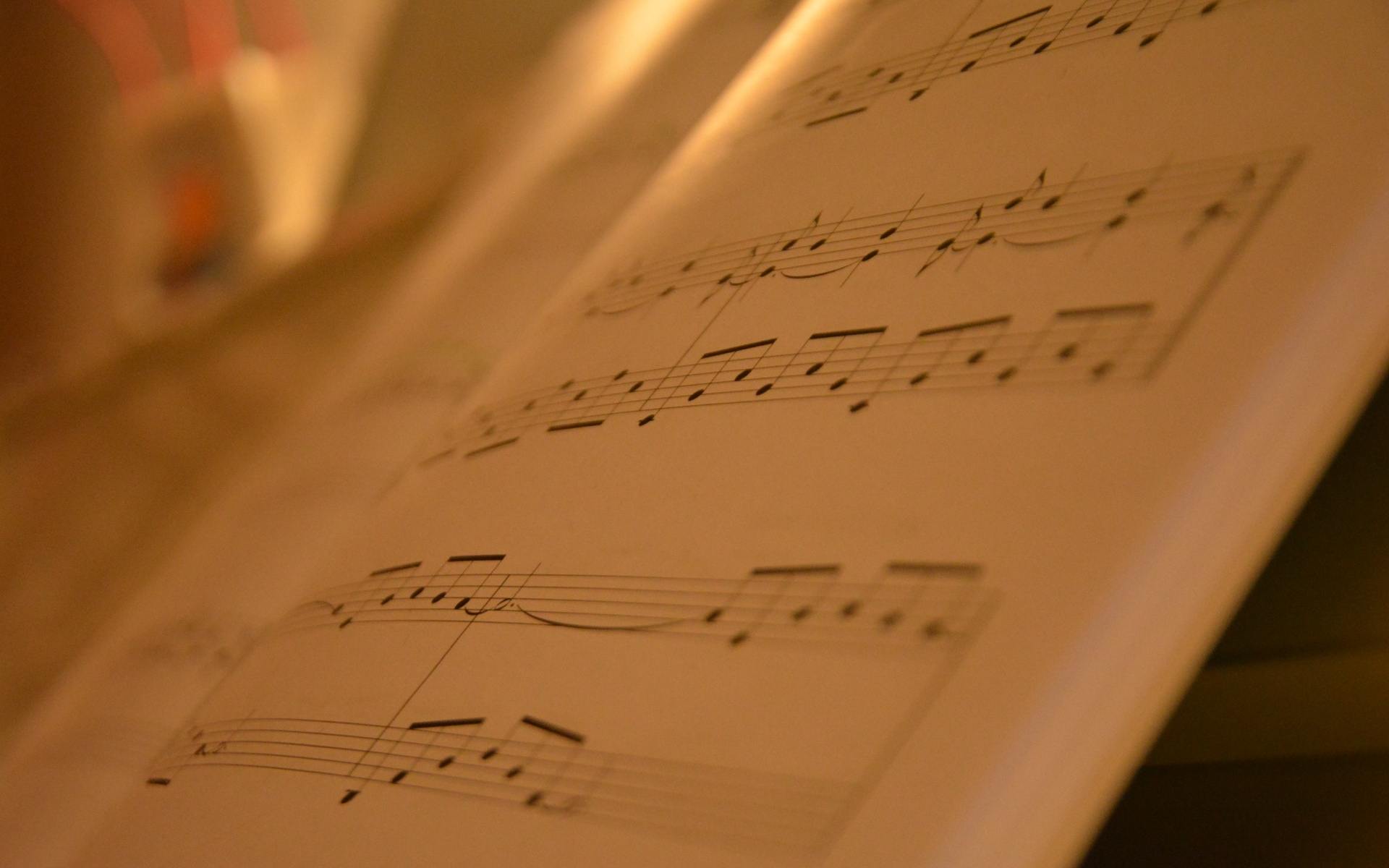
The Major scale, like all scales, has several patterns that cover the fret board. By learning and regularly practicing these shapes, you will develop the ability to play freely in any key. This lesson will focus on one key and to help you to get the patterns down. Then you can simply shift the patterns up and down the fret board to play in the key you want to. No matter what kind of music you aspire to play, this scale is fundamental learning that will gives a foundation for all music theory.
This scale, and its relative modes, make up most of the theory behind all music. There are some derivatives of the major scale such as the harmonic minor and melodic minor that add some variety to songwriting. There are seven notes in the scale. Since the major scale is the original scale that all others are identified by, the naming formula for major is 1, 2, 3, 4, 5, 6, and 7.
Modes of the Major Scale
Each note or scale degree of the scale can be taken as a relative mode of the parent scale if played over a progression of that key. For example, if playing the notes of G major in a song that is in A major you are actually utilizing the relative mode of the 2nd scale degree which is called the Dorian mode. Even though it is the same notes that are being played, when applied over a different key progression the feel will be much different which opens up a lot of possibilities. All of this will be covered in a future post about modes.
I recommend drilling these patterns daily with a metronome. You should practice playing these patterns in every possible position on the fret board too. The shapes are the important things to learn, not any one place on the fret board. The goals is to be able to deploy these patterns in any key. The ability to move these shapes in your mind will give you the ability to change keys and adapt quickly when put on the spot. By drilling the patterns daily, you will eventually develop such a strong muscle memory correlation for them that you will be able to improve effortlessly while focusing only on the song that being played and the mood and dynamics of what you want to add to song.
Repetition after Knowledge
Even after learning all of the patterns by heart, it is good to keep drilling scales daily as a regular part of a daily practice routine. Mastery of the guitar is a lifelong endeavor so increasing metronome speed will eventually lead to better picking efficiency and overall playing speed if that is your goal.
Everything is already laid out here below so all you have to do is to put in the work to internalize the patterns.
All examples here are in the Key of G.
For a printable handout of this lesson, click below.
http://musicaldiscipline.com/wp-content/uploads/2017/08/G-Major-Scale.pdf
Now go ahead and get started!
Major Scale Exercises
Ex.1
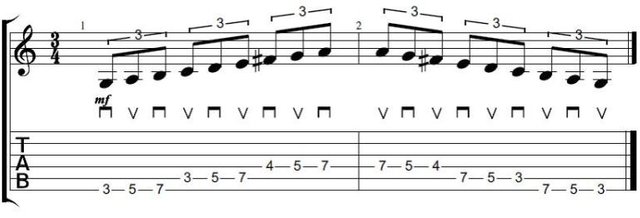
Pattern 1 Octave 1
Ex.2
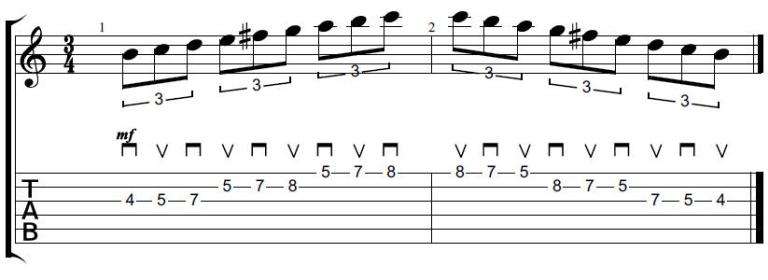
Pattern 1 Octave 2
Ex.3

Pattern 2 Octave 1
Ex.4
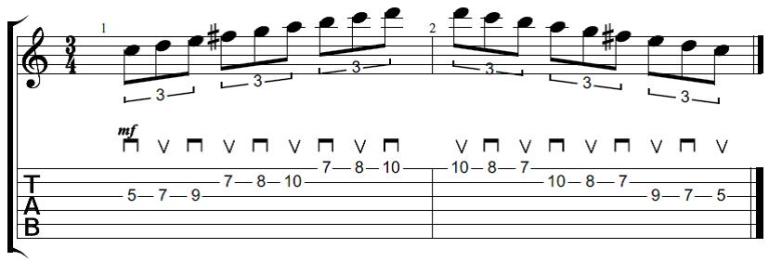
Pattern 2 Octave 2
Ex.5
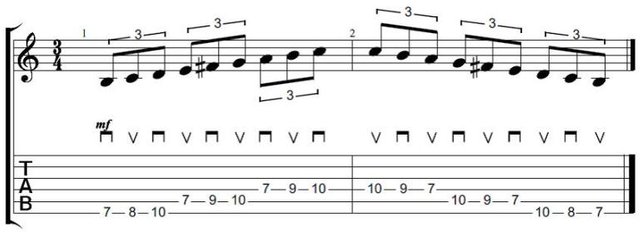
Pattern 3 Octave 1
Ex.6
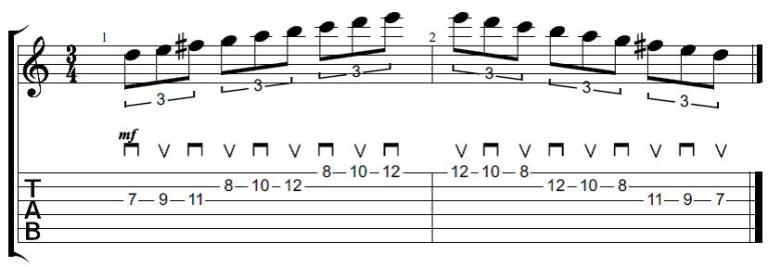
Pattern 3 Octave 2
Ex.7
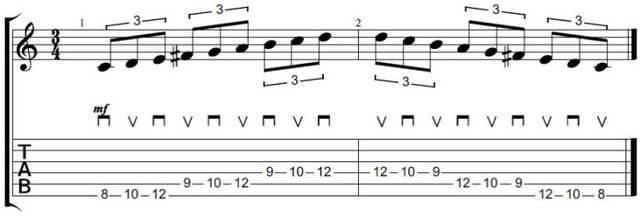
Pattern 4 Octave 1
Ex.8
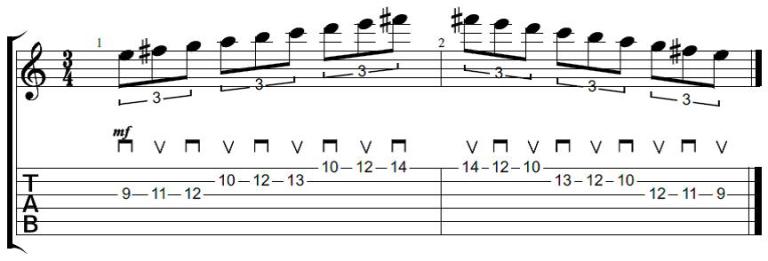
Pattern 4 Octave 2
Ex.9
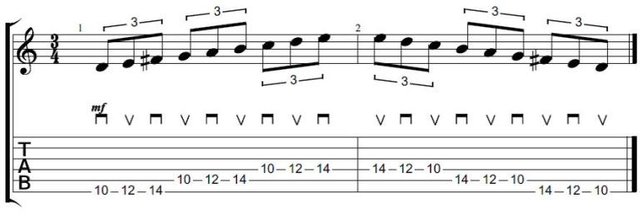
Pattern 5 Octave 1
Ex.10

Pattern 5 Octave 2
Ex.11
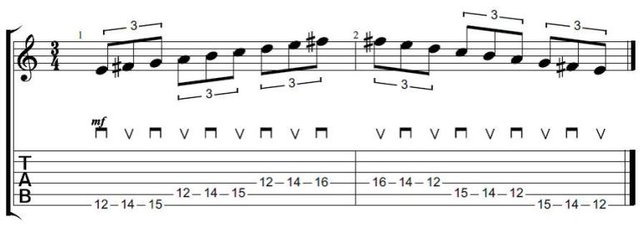
Pattern 6 Octave 1
Ex.12

Pattern 6 Octave 2
Ex.13
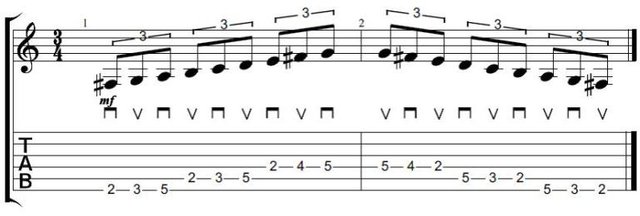
Pattern 7 Octave 1
Ex.14
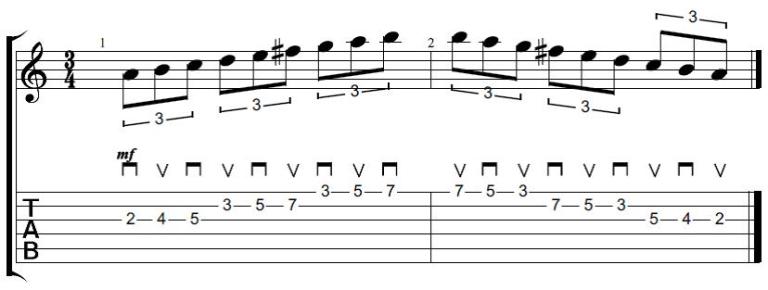
Pattern 7 Octave 2